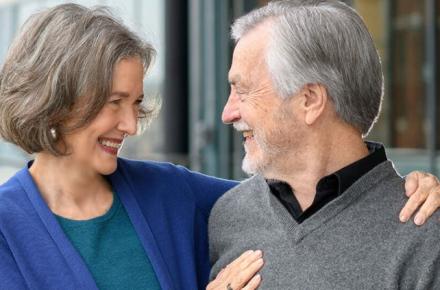The Difference Between Empathy and Enmeshment

I've spent a lifetime exploring how empathy works, how it goes awry, and how we can create a ground for self-care and self-empathy in our everyday lives. Here’s how I define empathy:
Empathy is a social and emotional skill that helps you feel and understand the emotions, circumstances, and needs of others, such that you can offer sensitive, perceptive, and appropriate communication and support.
I’ve also been looking at an idea about empathy that goes something like this:
Empathy means that you agree with me, that you support me, that you feel my emotions alongside me, and that you meet my needs, even if I don't express them. When you do that, we're empathizing and you're empathic.
Not really! When people agree completely, that's not empathy as much as it is similarity. There's not really a great need for empathy if everyone is similar; there's nothing much to do. However, when people feel the emotions and needs of others very strongly, to the extent that they lose track of their own, that's not empathy either. That's enmeshment.
When we're enmeshed with other people and we can't differentiate between their feelings and our own, we'll often fall into unconscious caretaking behaviors – not just to support the other person, but also to alleviate the emotional hyper-activation we feel in response to their emotions.
In my 2013 book, The Art of Empathy, I developed a step-by-step model of Six Essential Aspects of Empathy to help people understand how healthy empathy works:
- Emotion Contagion
- Empathic Accuracy
- Emotion Regulation
- Perspective Taking
- Concern for Others
- Perceptive Engagement
In healthy and intentional empathy, these six aspects work together to help you understand others and make perceptive responses to their stated and unstated emotions, needs, and situations. Luckily, healthy empathy doesn't have to be complex; it often happens in a split second, easily and naturally.
For instance, imagine that you're walking on the sidewalk. A man walks toward you carrying a very bulky bag, meets your eyes momentarily, and smiles as he walks toward you. You instinctively smile back and gracefully change your trajectory to make room for him and his bag.
In less than two seconds, you've run through all of the Six Essential Aspects of Empathy and perceptively engaged with a complete stranger. You read his situation, emotions, and needs accurately (steps 1 and 2), you regulated your own body and your emotional state (step 3), you took his perspective (step 4), you cared enough to meet his needs (step 5), and you engaged with him perceptively (step 6). Easy!
In enmeshment, however, this kind of easy progression through the six aspects of empathy doesn't happen. Instead, the process seems to stop at the first step, Emotion Contagion. When you’re overwhelmed by the emotions and needs of others, to the extent that you lose your sense of self, that's a sign of a very advanced capacity for Emotion Contagion that hasn't yet been matched by strong abilities in the other five aspects of empathy.
Welcome to my childhood! Overwhelming emotional enmeshment was my early experience of empathy, and it's the reason I've studied emotions and empathy my entire life.
When you know who you are and how to regulate your emotions, it will be much easier to maintain your sense of self and perform effective Perspective Taking. When you have skills, your empathy won't be an enmeshed, self-abandoning act; it will be an intentional interaction where you and the other person (or people, or animals!) will be able to perform Perceptive Engagement without losing yourselves in the process.
Healthy empathy is not enmeshment. It's a dance between equals, it's a song sung in harmony, it's a relationship, and it's natural and easy thing when you've got all Six Essential Aspects of Empathy working together. That's the art of empathy.
© Kripalu Center for Yoga & Health. All rights reserved. To request permission to reprint, please e-mail editor@kripalu.org.












































